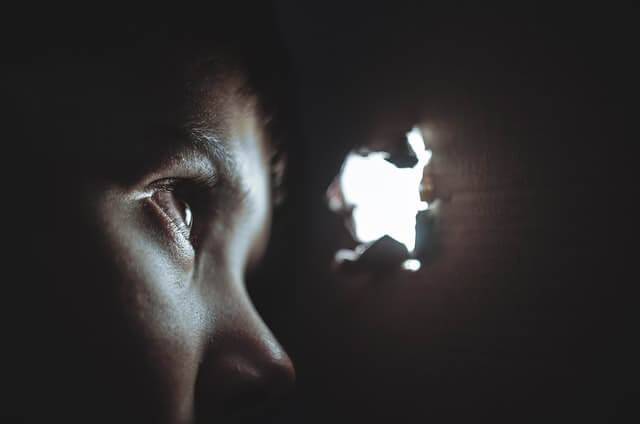The OnePlus 8T has a monochrome camera in its quad-camera setup, and after first hearing about it, it became the No. 1 feature on the new phone I wanted to try. My excitement comes from enjoying taking photos with the monochrome camera on the Huawei P10 and the P20 Pro, and then lamenting its disappearance on the Mate 20 Pro and beyond.
Can it possibly live up to my expectations, and kick-start a second era of genuine black-and-white photography on a smartphone? Not really, but as additional cameras on phones go, it’s still a welcome return.
The camera
Let’s look at the OnePlus 8T’s camera first. The main cameras are the 48-megapixel Sony IMX586 and the 16MP Sony IMX481 ultra-wide, which are joined by a 5MP macro camera, and the 2MP monochrome camera. Yes, just 2MP, but don’t look away just yet. Technically the monochrome camera is there to enhance the results from the main cameras, but it can be used on its own if you know how to do it.
To activate it you have to open the filter menu, but don’t worry, we’re not about to use a filter. Swipe through to the end of OnePlus’ extensive list of filters until you get to the final one, which is simply called Mono. There’s a brief pause as it’s selected, indicating the camera has switched itself to the monochrome camera, rather than applied a filter. At this point, you’re taking pure black-and-white photos with the dedicated camera.

What’s the difference? A filter returns the impression of a black-and-white photograph. It’s close, but there’s always a degree of interpretation involved, because the effect has been artificially generated. With a camera, there’s less intrusion, and the result is closer to “true” black-and-white. Even when Leica — a camera brand synonymous with black-and-white photography — tuned the filter that replaced the monochrome camera on the Huawei Mate 20 Pro, there were clear differences when the two were placed side-by-side.
The results
The monochrome camera on the Huawei P10 and P20 Pro had 20MP, so comparing the results from these two with the photos shot on the OnePlus 8T’s 2MP monochrome camera is pointless. It’s a shame the resolution is so low, but as I would discover this wasn’t the drawback you may fear. What I wanted to see was texture, detail, and atmosphere, and I was pleasantly surprised by the results.
- 1.
OnePlus 8T - 2.
iPhone 11 Pro
Take a look at the photo of the old barbecue. The age, the unloved condition of the metal, the spider webs extending from the side, and the foliage slowly overtaking it is captured with proper atmosphere by the OnePlus 8T’s camera. It has a feeling. Now compare it with the same photo taken by the Apple iPhone 11 Pro with its monochrome filter applied. It’s still a good photo, but the atmosphere simply isn’t the same. To my eyes, the OnePlus 8T’s true monochrome photo tells more of a story than the iPhone’s filtered shot.

I found the monochrome camera worked well in bright outside conditions, and pretty well indoors too, but it did struggle in low light where a lot of noise was introduced. However, for a 2MP camera, I think the shots look good, but more than that, I really enjoyed experimenting with a monochrome camera again.
A reason to buy the OnePlus 8T?
If I’m smitten with the OnePlus 8T’s monochrome camera, does that make it a reason to buy the phone? No, not really. I’m aware it’s a niche feature that will only appeal to some. At 2MP it doesn’t have the performance of Huawei’s old monochrome cameras to make it a true revival of the feature, but that doesn’t mean I’m not happy with what it can do. Beyond this, it’s also a pleasing change to a recent, and disappointing, phone camera trend.
For a while, various manufacturers have stuck a 2MP macro camera on the back of their phones, in a cynical, cheap, and easy way to claim it has a “quad camera” on the box. The results from these cameras has been uniformly terrible, and I’ve never used a good one. OnePlus has not only put a 5MP macro camera on the 8T that’s far better than any 2MP macro cam, but then added the 2MP monochrome camera that takes good photos, and isn’t the same thing we see on every other phone either.
Not only is it far more capable than a 2MP macro camera, but it’s also more creatively interesting, and something that doesn’t feel like a marketing exercise either. It’s great that OnePlus has made it possible for the camera to be used independently, rather than locking it away as a simple data collection tool for the main camera.
The OnePlus 8T’s monochrome camera inspired me to do something that no 2MP macro camera ever would: to go out and take enough photos I liked, that I felt I wanted to write something about them. To me, that’s exactly what a good camera should do, no matter how many megapixels it has.
Editors’ Recommendations















